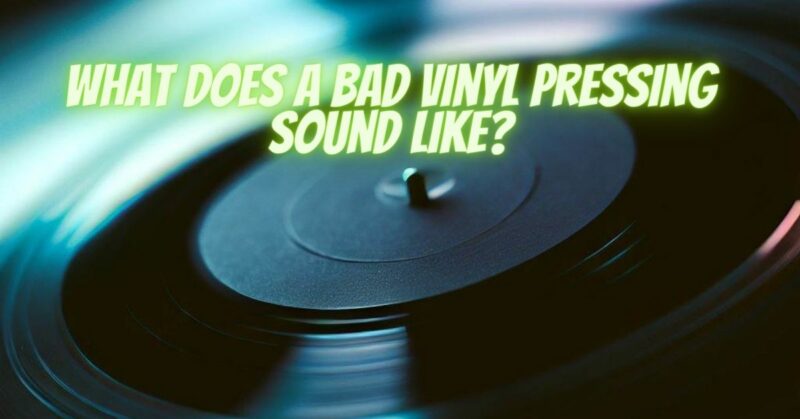Vinyl records have a unique and captivating sound, but not all pressings are created equal. Sometimes, you may encounter a bad vinyl pressing that affects the quality of the audio playback. In this article, we will explore the common signs of a bad vinyl pressing and provide insights on what to listen for when assessing the quality of your records.
- Surface Noise and Pops: A telltale sign of a bad vinyl pressing is an excessive amount of surface noise, including crackles, pops, and static. While some surface noise is expected due to the nature of the medium, an unusually high amount can be indicative of poor pressing quality or insufficient vinyl material. Pay attention to the level of surface noise and evaluate whether it interferes with the enjoyment of the music.
- Distortion and Muffled Sound: A poorly pressed vinyl record may exhibit distortion and a muffled sound. This can manifest as a loss of clarity, detail, and dynamics in the music. Listen for any instances where the sound appears compressed, lacking in definition, or with a lack of separation between instruments and vocals. Distortion can be caused by improper mastering or flaws in the pressing process.
- Non-fill and Skipping: Non-fill refers to a pressing defect where the grooves of the vinyl are not adequately filled with the vinyl material during manufacturing. This can result in audible gaps or missing sections of the music, creating interruptions in the playback. Additionally, a bad pressing may cause the needle to skip or jump across the record, disrupting the continuous flow of the music.
- Off-center or Off-balanced Pressing: A well-pressed vinyl record should have the center hole and the grooves concentrically aligned. However, a bad pressing can result in an off-center or off-balanced record. This can cause pitch variations during playback, resulting in an uneven or wobbly sound. Pay attention to any noticeable pitch fluctuations that persist throughout the record.
- Warping or Uneven Surface: Warped vinyl records are another sign of a bad pressing. A warped record may produce inconsistent tracking, causing pitch variations or needle skipping. Additionally, an uneven surface may lead to variations in the depth of the grooves, affecting the overall sound quality and playback experience.
Conclusion:
Identifying the signs of a bad vinyl pressing is essential for discerning music enthusiasts. By listening for excessive surface noise, pops, distortion, muffled sound, non-fill, skipping, off-center or off-balanced pressing, and warping or uneven surfaces, you can assess the quality of your records and make informed decisions about your collection. Remember that occasional surface noise is normal, but an excessive amount can indicate a pressing issue. If you consistently encounter bad pressings, consider reaching out to the record label or seeking out reputable pressing plants for higher-quality vinyl releases. With careful evaluation and selection, you can enhance your vinyl listening experience and enjoy the true potential of the format’s rich, immersive sound.

